 |
King of Chemicals Manufacturers |
Specifications, Properties, Uses, SDS of Ferric Ammonium Citrate USP FCC Food Grade Manufacturer Supplier Exporter Wholesale & Small Packs, CAS Number 1185-57-5. |
|
| King of Chemicals has several associated companies having accreditations like cGMP, GLP - FDA Approved Good Manufacturing Practice and Good Laboratory Practice of WHO standard, ISO-9001, ISO-14001, ISO/IEC 17025, ISO ISO-45000, HACCP, FSSC 220000, FSSAI, "REACH" Registered, Kosher & Halal Certified. e-CTD and DMF support can be made available if needed. We offer USP NF BP Ph Eur EP IP JP Analytical Reagent FCC Food Grade Chemicals & Nutraceuticals. | |
        |
|
Muby Chem Pvt. Ltd. is a several decades old group of companies, engaged in manufacturing, supplying, distributing, wholesale supplies of Ferric Ammonium Citrate USP FCC Food Grade for actual users, including retail or small pack supplies for research and development work.
We supply fine and speciality chemicals, pharmaceutical excipients, mineral fortifiers in chemically pure, analytical reagent grade, IP BP USP Ph Eur EP JP and other pharmaceutical grade monograph including FCC Food grade chemicals and Nutraceuticals at best prices. We and/or our associated units have all the facilities to supply as per cGMP standard observing good manufacturing practice and good laboratory practice. We can assure low microbial count and also offer a test certificate for the same. We maintain warehouses across USA, India, and UAE. Our group exports to USA, Canada, Mexico, Argentina, Brazil, Chile, Korea, Malaysia, Thailand, Indonesia, Europe, and several other parts of the world. We supply in wholesale container loads to small pack of few grams. Solid products may be specified for it size and shape as desired by the buyer.


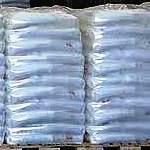
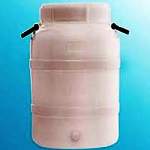
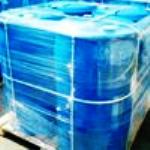
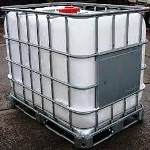
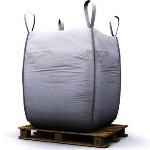
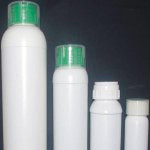
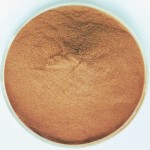
Ferric Ammonium Citrate CAS Number 1185-57-5
For Properties Specifications Uses of Ferric Ammonium Citrate Click Properties, Specifications, Uses, Price, Process of Ferric Ammonium Citrate Manufacturer.
For For SDS MSDS Sheet of Ferric Ammonium Citrate Click SDS Safety Data Sheet MSDS Sheet of Ferric Ammonium Citrate Manufacturer.
The Properties, Specifications, Monograph and Uses of Ferric Ammonium Citrate:
Ferric Ammonium Citrate USP Grade Specifications
Ferric Ammonium Citrate contains not less than 16.5 percent and not more than 18.5 percent of iron (Fe).
Identification:
A: Ignite about 0.5 g: it chars, and leaves a residue of iron oxide.
B: To 10 mL of a solution of Ferric Ammonium Citrate (1 in 100) add 6 N ammonium hydroxide drop wise: the solution darkens, but no precipitate forms.
C: To 5 mL of a solution of Ferric Ammonium Citrate (1 in 100) add 0.3 mL of potassium permanganate TS and 4 mL of mercuric sulfate TS, and heat the mixture to boiling: a white precipitate forms.
Ferric citrate: To a solution of Ferric Ammonium Citrate (1 in 100) add potassium ferrocyanide TS: no blue precipitate is formed.
Sulfate: 0.3% Maximum.
Oxalate: Transfer 1 g to a 125-mL separator, dissolve in 10 mL of water, add 2 mL of hydrochloric acid, and extract successively with one 50-mL portion and one 20-mL portion of ether. Transfer the combined ether extracts to a 150-mL beaker, add 10 mL of water, and remove the ether by evaporation on a steam bath. Add 1 drop of glacial acetic acid and 1 mL of calcium acetate solution (1 in 20): no turbidity is produced within 5 minutes.
Mercury: not more than 10 µg per g is found..
Limit of lead: not more than 10 µg per g is found.
Ferric Ammonium Citrate, Brown FCC Food Grade Specifications
Iron Ammonium Citrate
INS: 381 CAS 1185-57-5
DESCRIPTION
Ferric Ammonium Citrate, Brown, occurs as thin, transparent brown, red-brown, or garnet red scales or granules, or as a brown-yellow powder. It is a complex salt of undetermined structure, composed of iron, ammonia, and citric acid. It is very soluble in water, but is insoluble in alcohol. The pH of a 1:20 aqueous solution is about 5.0 to 8.0. It is deliquescent in air and is affected by light.
Function: Nutrient.
REQUIREMENTS
Identification:
A. A 500-mg sample, when ignited, chars and leaves a residue of iron oxide.
B. Add 0.3 mL of potassium permanganate TS and 4 mL of mercuric sulfate TS to 5 mL of a 1:10 aqueous solution, and heat the mixture to boiling. A white precipitate forms.
C. Dissolve about 500 mg of sample in 5 mL of water, and add 5 mL of 1 N sodium hydroxide. A red-brown precipitate forms, and ammonia is evolved when the mixture is heated.
Assay: Not less than 16.5% and not more than 18.5% of iron (Fe).
Ferric Citrate: Passes test.
Lead: Not more than 2 mg/kg.
Mercury: Not more than 1 mg/kg.
Oxalate: Passes test.
Sulfate: Not more than 0.3%.
The MSDS-SDS Hazard Statement of Ferric Ammonium Citrate:
Ferric Ammonium Citrate SDS GHS, Safety Data Sheet
MSDS Sheet, Material Safety Data Sheet 26-March-25
1. Product Identification
Product Name & Other Names: Ferric ammonium citrate or Ammonium iron(III) citrate or Ammonium ferric citrate
CAS No.: 1185-57-5
EINECS EC Number: 214-686-6
Relevant uses and uses advised against (if any): Industrial Manufacturing.
2. Hazards Identification
GHS, Globally Harmonized System Classification in accordance with 29 CFR 1910
Classification according to Regulation (EC) No 1272/2008
Skin irritation (Category 2), H315
Eye irritation (Category 2), H319
Specific target organ toxicity - single exposure (Category 3), Respiratory system, H335
Labeling according to GHS & Regulation (EC) No 1272/2008
GHS Label Elements 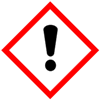 Irritant |
Signal Words: Warning
Hazard statements:
H315: Causes skin irritation.
H319: Causes serious eye irritation.
H335 May cause respiratory irritation.
Precautionary statements:
P261: Avoid breathing dust/ fume/ gas/ mist/ vapors/ spray.
P264: Wash … thoroughly after handling.
P280: Wear protective gloves/protective clothing/eye protection/face protection.
P362: Take off contaminated clothing and wash before reuse.
P302+352: IF ON SKIN: Wash with soap and water.
P332+313: If skin irritation occurs: Get medical advice/attention.
P305+351+338: IF IN EYES: Rinse cautiously with water for several minutes. Remove contact lenses if present and easy to do – continue rinsing.
P337+313: If eye irritation persists get medical advice/attention.
3. Composition/Information on Ingredients
Product Name & Other Names: Ferric ammonium citrate or Ammonium iron(III) citrate or Ammonium ferric citrate
CAS No.: 1185-57-5
EINECS EC Number: 214-686-6
4. First Aid Measures
Always seek medical attention after first aid measures are provided.
Inhalation: Remove to fresh air. If not breathing, give artificial respiration. If breathing is difficult, give oxygen. Get medical attention.
Ingestion: Never give anything by mouth to an unconscious person. Get medical attention.
Skin Contact: Wipe off excess material from skin then immediately flush skin with plenty of water for at least 15 minutes. Remove contaminated clothing and shoes. Get medical attention. Wash clothing before reuse.
Eye Contact: Immediately flush eyes with plenty of water for at least 15 minutes, lifting lower and upper eyelids occasionally. Get medical attention immediately.
5. Fire Fighting Measures
Flammability of the Product: Non-flammable.
Products of Combustion: Carbon & nitrogen oxides, Oxides of Iron etc.
Fire: It is not considered to be a fire hazard. It may burn at higher temperature.
Fire Extinguishing Media: Use water spray, alcohol-resistant foam, dry chemical, or carbon dioxide. Use means suitable for extinguishing surrounding fire.
Special Information: In the event of a fire, wear full protective clothing and NIOSH-approved self-contained breathing apparatus with full face piece operated in the pressure demand or other positive pressure mode. At high temperatures or when moistened under fire conditions, it may produce toxic or irritating fumes. On decomposition it may emit hydrogen iodide. Containers may explode on heating.
6. Accidental Release Measures
Personal precautions, protective equipment, and emergency procedures: Ventilate area of leak or spill. Avoid breathing dust/fumes/gas/mist/vapors/spray. Use individual protective equipment (waterproof boots, suitable protective clothing, safety glasses, etc.). Restrict unprotected personnel from the area.
Environmental precautions: Do not let the product enter drains, soil, or water sources.
Methods and materials used for containment Cleanup procedures and Storage: Contain spilled material. Cover with an inert, non-combustible absorbent material, (e.g. sand, earth, diatomaceous earth, vermiculite). Vacuum or sweep-up and remove to an approved disposal container.
7. Handling and Storage
Precautions for safe handling: Apply according to good manufacturing and industrial hygiene practices. Ensure proper ventilation. In case of insufficient ventilation, wear suitable respiratory equipment. Do not drink, eat, or smoke while handling. Avoid contact with skin, eyes, and clothing. Minimize dust generation. Avoid breathing dust/fumes/gas/mist/vapors/spray. Keep container tightly closed. Avoid ingestion and inhalation. Use individual protective equipment (waterproof boots, suitable protective clothing, safety glasses, etc.).
Conditions for safe storage, including any incompatibilities: Store in cool, dry, and ventilated area away from heat sources and protected from sunlight in tightly closed original container. Keep air contact to a minimum. Store protected from heat, sparks and ignition sources and incompatible materials. Avoid inhalation of dust/mist/vapor. Do not store with incompatible materials like strong oxidizing agents and alkalis.
8. Exposure Controls/Personal Protection
Airborne Exposure Limits:
Exposure Limit
TWA 1 mg/m3: USA ACGIH Threshold Limit Values (2011)
REL 1 mg/m3: USA NIOSH: Pocket Guide to Chemical Hazards (2010)
TWA 1 mg/m3: USA OSHA Table Z-1-A (29 CFR 1910.1000) (1989)
Ventilation System: A system of local and/or general exhaust is recommended to keep employee exposures as low as possible.
Personal Respirators (NIOSH Approved): For conditions of use where exposure to dust or mist is apparent and engineering controls are not feasible, a particulate respirator may be worn.
Skin Protection: Wear protective gloves and clean body-covering clothing.
Eye Protection: Use chemical safety goggles and/or full face shield where dusting or splashing of solutions is possible. Maintain eye wash fountain and quick-drench facilities in work area.
Other Control Measures: Maintain good housekeeping in work area. Handle in accordance with good industrial hygiene and safety practice.
9. Physical and Chemical Properties
Appearance: It is brown-green powder or crystals.
Odor: It is odorless or has slight odor of ammonia.
Odor threshold: Not applicable.
pH: No information found.
Relative density: around 1.8
Melting point/freezing point: No information found.
Initial boiling point and boiling range: No information found.
Flash point: No information found.
Auto-ignition temperature: No information found.
Decomposition temperature: No information found.
Upper/lower flammability or explosive limits: No information found.
Vapor pressure: No information found.
Vapor density: No information found.
Evaporation rate: No information found.
Flammability (solid, gas): No information found.
Partition coefficient: n-octanol/water: No information found.
Solubility: It is freely soluble in water.
Viscosity: No information found.
10. Stability and Reactivity
Stability: It is stable under ordinary conditions of use and storage.
Hazardous Decomposition Products: It emits toxic fumes, carbon & nitrogen oxides and iron oxide when heated to decomposition.
Hazardous Polymerization: Will not occur.
Incompatibilities: Strong oxidizing agents and alkalies.
Conditions to Avoid: Incompatibles heat, light and moisture.
11. Toxicological Information
Toxicity data: No information found.
Carcinogenicity: No component of this product present at levels greater than or equal to 0.1% is identified as possible or confirmed human carcinogen by IARC, ACGIH, OSHA and NTP.
Mutagenic Effects: No information found.
Teratogenic Effects: No information found.
Developmental Toxicity: No information found.
Reproductive Effects: No information found.
12. Ecological Information
Toxicity to fish: LC0 - Fundulus heteroclitus - 200 mg/l - 7 d
Persistence and Degradability: Persistence is unlikely due to water solubility.
Mobility: Mobility likely due to water solubility.
Bioaccumulation/ Accumulation: No information found.
Results of PBT and vPvB assessment: No information found.
13. Disposal Considerations
Whatever cannot be saved for recovery or recycling should be managed in an appropriate and approved waste disposal facility.
14. Transport Information
Land Transport DOT USA, TDG Canada & ADR/RID Europe: Not controlled.
Sea Transport IMO/IMDG: Not controlled.
Air Transport ICAO/IATA: Not controlled.
15. Regulatory Information
USA:
SARA 311/312 Hazards: Acute health hazard. Irritation..
California Prop. 65 Components: Not listed.
16. Other Information
DISCLAIMER: The information and recommendations set forth herein are presented in good faith and believed correct as of the date hereof. It is compiled from various sources, and it is not necessarily all inclusive nor fully adequate in every circumstance. In addition, these suggestions should not be confused with nor followed in violation of applicable laws, regulations, rules, or insurance requirements applicable. This SDS MSDS sheet is intended only as a guide to the appropriate precautionary handling of the material by a professionally trained person using this product. Individuals receiving the information must exercise their independent judgment in determining its appropriateness for a particular purpose. This shall not constitute a guarantee for any specific product features and shall not establish a legally valid contractual relationship. In no case shall our company be liable to loss or damages by the product user.

Ferric Ammonium Citrate Manufacturers, Suppliers, Exporters, Wholesalers:
King of Chemicals manufacturers

Plot No. 2900/46&47 + 2900/163to167, GIDC, Ankleshwar, Dist. Bharuch, India
India, USA, UAE
TEL: (Office) 91-22-23774610, 91-22-23723564
e-mail: info@kingofchemicals.com
Copyright and Usual Disclaimer is Applicable --- March 27, 2025
If I give you “My Word” Nobody can undo it.
If I sign an “Agreement” my Lawyer will undo it
Our products are for industrial and laboratory use only. The user must test the material before use. We are not dispensing chemists or druggist and do not offer over the counter type (OTC) products for medical use by individuals.
We and our associates manufacture pure chemicals surpassing Monograph Specifications of Analytical Reagent Standards, British & European Pharmacopoeia BP Ph Eur EP Standard, US Pharmacopoeia USP NF Standard, Indian Pharmacopoeia IP Standard, Japan Pharmacopoeia JP Standard, FCC Food Grade Standard. |
|